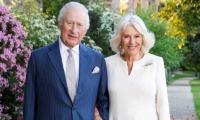‘Show-cause’ to Pakistan People’s Party (PPP) and Awami National Party (ANP) by the faction of Pakistan Democratic Movement (PDM), led by Pakistan Muslim League, PML-N and Jamiat Ulema-e-Islam (JUI-F), turns out to be the last nail in the coffin of once called the 11-party alliance of the opposition formed in September last year to oust Prime Minister Imran Khan.
The development has certainly put Prime Minister Imran Khan on a driving seat with hardly any chance of an organised movement against him in the near future unless he himself commits too many mistakes and blunders, which some believe Kaptan is quite capable of.
The division within the PDM was on the cards since long and both the mainstream opposition parties should share the blame, while the biggest loser in the seven months old political alliance is undoubtedly none other than Maulana Fazlur Rehman-led Jamiat Ulema-e-Pakistan (JUI-F).
Some party leaders of PML-N whom I have talked to were shocked and believe the decision was taken in haste. Instead, they suggest, Maulana should have called the meeting of PDM’s heads. Its impact can come in the forthcoming two by-elections in Daska on April 10 and in Karachi on April 29.
Awami National Party (ANP) has already quit PDM while PPP’s Central Executive Committee will meet on April 11, and is all set to give a befitting reply to PML(N), architect of the ‘show-cause’ or as PML leader Shahid Khakan Abbasi said ‘explanation letter.’
In these circumstances Imran Khan should considered himself lucky to have an opposition like PDM, which despite having strong presence in the National Assembly, Senate, Punjab Assembly and government in Sindh, could hardly poses a challenge to him in the last two-and-half-years.
The approach adopted by both the parties since the Senate elections apparently looked quite immature just when they were about to announce the plan for March 26 ‘Long March.’
The two parties have the history of ‘love and hate,’ which allowed someone like Imran.Khan to emerge as the third force in 2018. Both the parties still have strong roots in their own specific constituencies of Punjab and Sindh and did not performed as badly as some observers were expecting in 2018.
PPP got more seats in Sindh while PML-N vote bank by and large remained intact despite former Prime Minister Nawaz Sharif’s disqualification in the backdrop of 2016 Panama Papers leak. It still emerged as a single largest party in the Punjab Assembly and Imran Khan was left with no other choice but to form a coalition with PML-Q despite his strong reservations about Chaudhrys of Gujrat.
Some hidden powers also played a role in bringing the two closer but till lately they were practically on no talking terms. It was only before the Senate elections Imran went to Chaudhry's House in Lahore to break the ice.
What happened in Balochistan prior to the general elections and the way PML-N suddenly been replaced by a new entity, Balochistan Awami Party (BAP), raised serious questions and the alleged role played by former President and PPP Co-Chairman Asif Ali Zardari.
Both the parties provided the cushion to the PTI to form government both at the Centre and in Punjab. Secondly, had PML-N sorted out its differences with PML-Q they could have blocked PTI’s entry into Punjab.
Imran Khan did not face much challenge from his political rivals despite the way NAB was used against PML-N and PPP as the opposition through their poor counter strategy provided relief to Imran.
For instance, if Sadiq Sanjrani should thank for not only getting him elected as Chairman Senate two years back but again when a vote of no-confidence was defeated thanks to 14 opposition senators. He retained his position this time thanks to seven senators.
Only Asif Zardari knows why he gave preference to Sanjrani over Raza Rabbani in 2018 when the latter could have easily re-elected as Chairman Senate in 2018.
Soon after 2018 general elections, Jamiat Ulema-e-Islam (JUI-F), which was practically routed from KP by the PTI, wanted all the opposition parties not to accept the results and should launch the movement without taking assembly oath. But, he could not convince both PML(N) and PPP.
Opposition received another setback when both PML-N and PPP backed out after supporting Maulana’s own long march which reached Islamabad. Their leaders, including Shahbaz Sharif, did address the long march but kept their participation in low key.
It followed Nawaz Sharif’s surprise leaving for London for ‘medical treatment’ amid reports of serious internal differences within the government. Some sources said Imran was not happy the way he was allowed to go.
Thus, when the PDM was formed and announced its plan to oust the government there was not much enthusiasm even within the opposition. They held some impressive public meetings in Punjab but could not draw a massive crowd to its crucial rally at Minar-e-Pakistan in Lahore.
Prior to the Lahore moot Nawaz Sharif’s surprise attack during Gujranwala meeting created doubts in the PPP circles about Mian Sahib and Maulana’s intention as the latter too adopted an aggressive tone.
The proposal to resign from the assemblies before the March 26 ‘Long March’ was on the cards when the PDM parties accepted PPP’s proposal not to boycott Senate polls and by-elections. The move paid off and PDM surprised PTI in both the elections.
The PPP’s position on not resigning from the assemblies had some justification. Was there a need of harsh speech from Asif Zardari? Perhaps not. At the same time, PML(N) and JUI took extreme positions and all this led to the practical division after the last meeting of PDM heads in Islamabad.
But, PDM was still intact till PPP took a ‘U-turn’ after Yusuf Raza Gilani and Maulana Ghafoor Haidri lost election of Chairman and Deputy Chairman of Senate. Fact remains that PML(N) stood by its commitment and it's only PPP which should be blamed for the way seven of its alleged senators voted Gilani in such a manner which allowed controversial Presiding Officer Syed Muzazafar Hussain Shah to reject these votes.
PPP was morally and politically bound to allow the PML(N) the opposition slot for two reasons. One, they had committed. Secondly, Gilani’s had already challenged Sanjrani’s election.
Opposition is clearly divided now or if one could say there are two PDMs, one led by PPP and ANP while the other by PML(N) and JUI(F) The other five parties are BNP(Mengal), National Party(NP), Pakhtunkhawa Milli Awami Party(PKMAP) and PPP(Sherpao).
Unless the Prime Minister and his team commit any major blunders, PTI is set to complete its term and Imran Khan could go into history as the first PM to remain in power for five years.
The writer is a senior columnist and analyst of Geo, The News and Jang
Twitter:@MazharAbbasGEO
Suspects identified as Attaullah and Faisal Shehzad were apprehended from Sialkot
FIA directed Babar to submit responses by April 7, 2025 — a date that had already passed by time he received notice
During hearing, Additional Advocate General Punjab informed court that LHC has submitted its response
During conference, participants assessed evolving maritime situation in region with focus on national security







